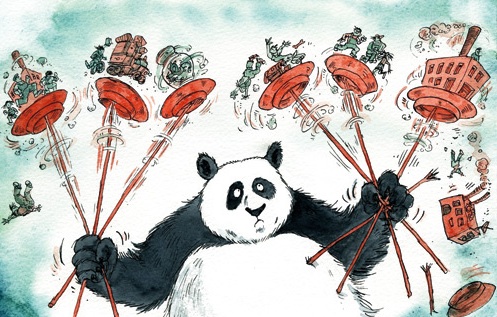Andrew Sheng and Xiao Geng write: The Chinese economy has caught a surprisingly severe cold this winter – a cold so bad that almost all global markets are sneezing. During the first two weeks of 2016, the Shanghai Composite Index fell 18%. On January 15, the index closed at 2,901 – very close to the trough of last summer’s stock-market crash. Foreign analysts almost uniformly predict another market crash or even a hard landing. With oil prices dipping below $28 per barrel, the specter of a global economic pandemic has appeared.
China’s New Year financial-market shock has been attributed to several causes, primarily related to policy transparency and clarity. One was the reversal of China’s attempt to install a stock-market “circuit breaker,” which, far from tempering volatility, spurred a new wave of selloffs. The other – arguably more serious – problem was market confusion about the direction of the renminbi exchange rate, following a gradual but constant ten-day depreciation against the US dollar that fueled capital outflows, until the People’s Bank of China (PBOC) intervened.
According to the PBOC, the confusion arose from a technical change in the process of setting the renminbi exchange rate, with the common reference rate against the US dollar replaced by a rate established on the basis of an undisclosed basket of key international currencies. This reform may be intended to boost the renminbi’s stability; but it is not good for markets, which prefer stability against the dollar to the uncertainty of a managed float.
This is not the first time markets have felt blindsided by well-meaning reforms. Unclear policy communication was compounded by global developments. The US Federal Reserve’s decision in December to raise the federal funds rate, together with the uncertainty generated by collapsing oil prices, has also spurred investors to reduce their China exposure and switch to dollars.
China’s government has reiterated its commitment to implementing tough market-oriented reforms, including measures to address environmental pollution, overcapacity, excessive debt, high taxes, bureaucratic red tape, and monopoly privileges for state-owned enterprises (SOEs).
All modern economies struggle with the inconsistency between sharp and volatile short-term price movements in financial markets and more gradual long-term structural adjustments in the real economy. Unlike in the past, when Chinese policymakers were able to concentrate on the real economy without worrying about excessive financial-market instability, they now must manage short-term volatility caused by liberalized interest and exchange rates, together with larger and faster capital flows both within and across borders.
Only with market-savvy central- and local-government officials and SOE managers can China implement short-term stabilization measures or long-term structural reforms. The problem is that such talent is not widely available in the country.
The key to attracting market-oriented talent to China’s large bureaucracy is to make it clear that risk-taking – and even failure – will be tolerated. Only if skilled officials feel comfortable making real-time decisions under uncertain conditions can the state keep pace with markets, responding effectively to new developments and thus maintaining high levels of confidence.
China is in a strong position to handle the challenges that it faces. Growth, while slower than in the last three decades, remains relatively strong, as does China’s foreign-asset position and its central-government and household-sector balance sheets. Stable markets need stable policy transitions. By installing officials with strong policy credibility and the ability to handle market volatility deftly, China can complete its transition to a more market-oriented, innovation-driven economy – one that also supports stronger global growth.

